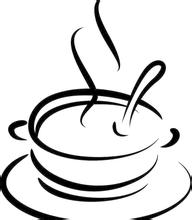The difference between semi-washing and half-sun treatment Coffee Bean Flavor description introduction to Manor
The difference between semi-washing and half-sun treatment Coffee Bean Flavor description introduction to Manor
The most sensible and practical way is to classify them into three major coffee growing areas in the world: Africa, Indonesia and Central and South America. Generally speaking, coffee grown in the vicinity has similar characteristics. If a particular bean is out of stock, the manufacturer and buyer of the comprehensive product will usually look for a nearby country. The comprehensive product maker will say: I want to use a "medium" one. This means light, delicious, vibrant Central American beans. Or maybe it would be more interesting to add "Africa". Africa is a land full of game beans; for example, "Indonesia" is used as the foundation. Because no other bean has such a powerful and full taste.
After taking out the sticky pods of the red fruit, move them into a large sink, followed by the most important washing and fermentation to remove pectin shavings from the pods. This sticky material is not easy to wash away with water, so it is necessary to hydrolyze the pectin with all kinds of bacteria in the tank, decompose the pectin and wash the pods in the tank to accelerate the pectin to break away from the pods. The fermentation process takes about 16 to 36 hours, depending on temperature and humidity, when malic acid is naturally produced in the tank. Citric acid. Acetic acid. Lactic acid and propionic acid. Interestingly, the raw bean itself contains almost no acetic acid, but the fermentation process of washing treatment can increase the acetic acid concentration of the bean, which is beneficial to the flavor of coffee. Not only can these acids inhibit mold parasitism, some acid elves will also be mixed into beans (which is why washed beans taste so sour), but samples must be taken at any time to see if the sticky pectin on the pods is clean, and then decide whether to stop fermentation and take out clean pods. Once it exceeds 36Murray for 72 hours, it may ferment too much, produce too many fatty acids and butynic acid and give off a foul smell, and the beans mixed with too much acid will also make the coffee too sour. Yu is an inferior bean and the Brazilian coffee fields are endless, and most of them are harvested by machinery to meet the economic benefits. When 75% of the coffee fruit in the coffee garden turns red, mechanical harvesting is started, followed by the same pre-washing operation, which is moved into the sink to remove floating beans, sift out the sunken beans, and then use a large pulp screening machine to dig out the pulp and remove the pods covered with pectin. The next stage is separate from the washing method: the sticky pods do not need to be moved into the tank to ferment, but to the outdoor bean drying farm. Because of the dry climate in Brazil, the sticky pectin on the pods will harden in about a day or so. Then use a large number of manpower to turn up and down, so that the pods dry evenly inside and outside, so as not to return to moisture and stink. In about two to three days, with the help of the natural force of the sun pass and dry climate, the pods can achieve a certain degree of dehydration. Then further dry with a dryer, the water content is reduced to 10.5%, and the pods are stored in a special container for about 10 days to further mature, in order to stabilize the quality, remove the sheepskin (pods) before export, remove the coffee beans, and pack them in grades.

Important Notice :
前街咖啡 FrontStreet Coffee has moved to new addredd:
FrontStreet Coffee Address: 315,Donghua East Road,GuangZhou
Tel:020 38364473
- Prev

Belgian kettle extraction coffee time and water temperature
The influence of the extraction time and water temperature of Belgian kettle on the extraction quantity must be greater than the size of the powder, but the size of the powder is also important and can also improve the final quality of concentration. The amount of extraction can be regarded as coarse adjustment, while the time can be regarded as the final fine adjustment. Take a chestnut, 20g powder, 25 seconds, extract 50g concentrated, taste light dead acid, indicating that this method is obviously inadequate, this can not be relied on
- Next

The difference of flavor description and taste treatment between washing method and sunburn method
The difference of flavor between washing and sunbathing methods the adhesion of mucous membrane is very strong and it is not easy to remove. It must be kept in the tank for about 18-36 hours to make it mellow and decompose the mucous membrane. There are two methods of fermentation, namely wet hair alcohol and dry hair alcohol, as the name implies, the former adds water, the latter does not add water. In the process of producing alcohol, the seed and the internal pulp will produce special changes.
Related
- What is the meaning of lactic acid fermentation with coffee bean treatment?
- How to judge the state of foam by sound?
- How does the latte pull out the unicorn pattern? Come to get for a little trick to improve the flower pull!
- Will flower pulling affect the taste of the latte?
- Do you know the history of coffee?
- The difference between honey treatment and sun washing what is raisin honey treatment?
- What kind of milk can a novice use to make coffee foam to keep the foam longer? The correct method and skills of milking tutorial sharing
- Why do washed coffee beans taste sour? Flavor characteristics of washed Coffee
- Introduction to the skill of how to practice the size and height of water injection around the circle of hand-brewed coffee
- How do beginners practice coffee flower drawing from scratch?

